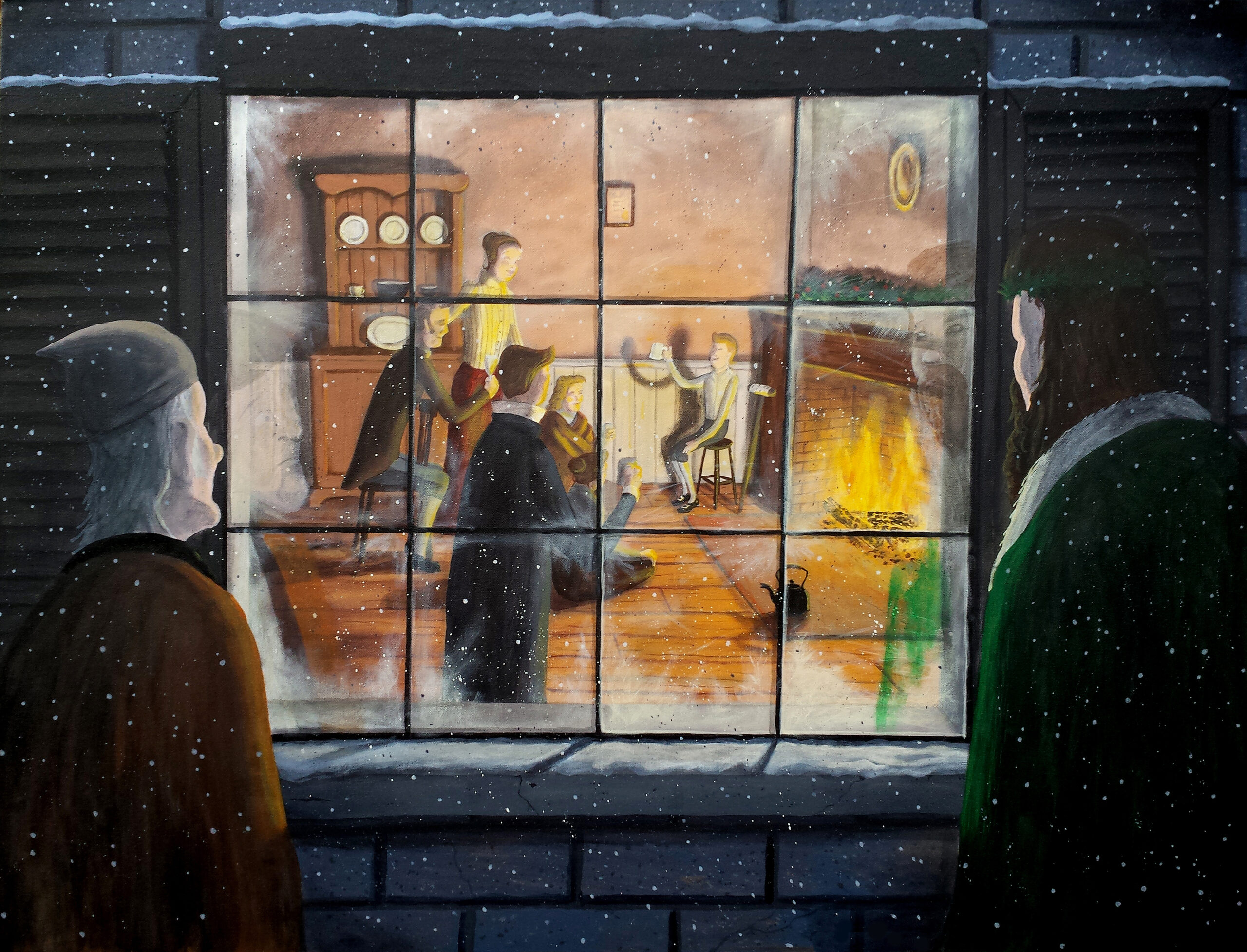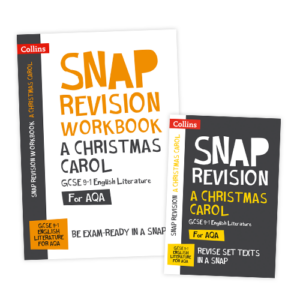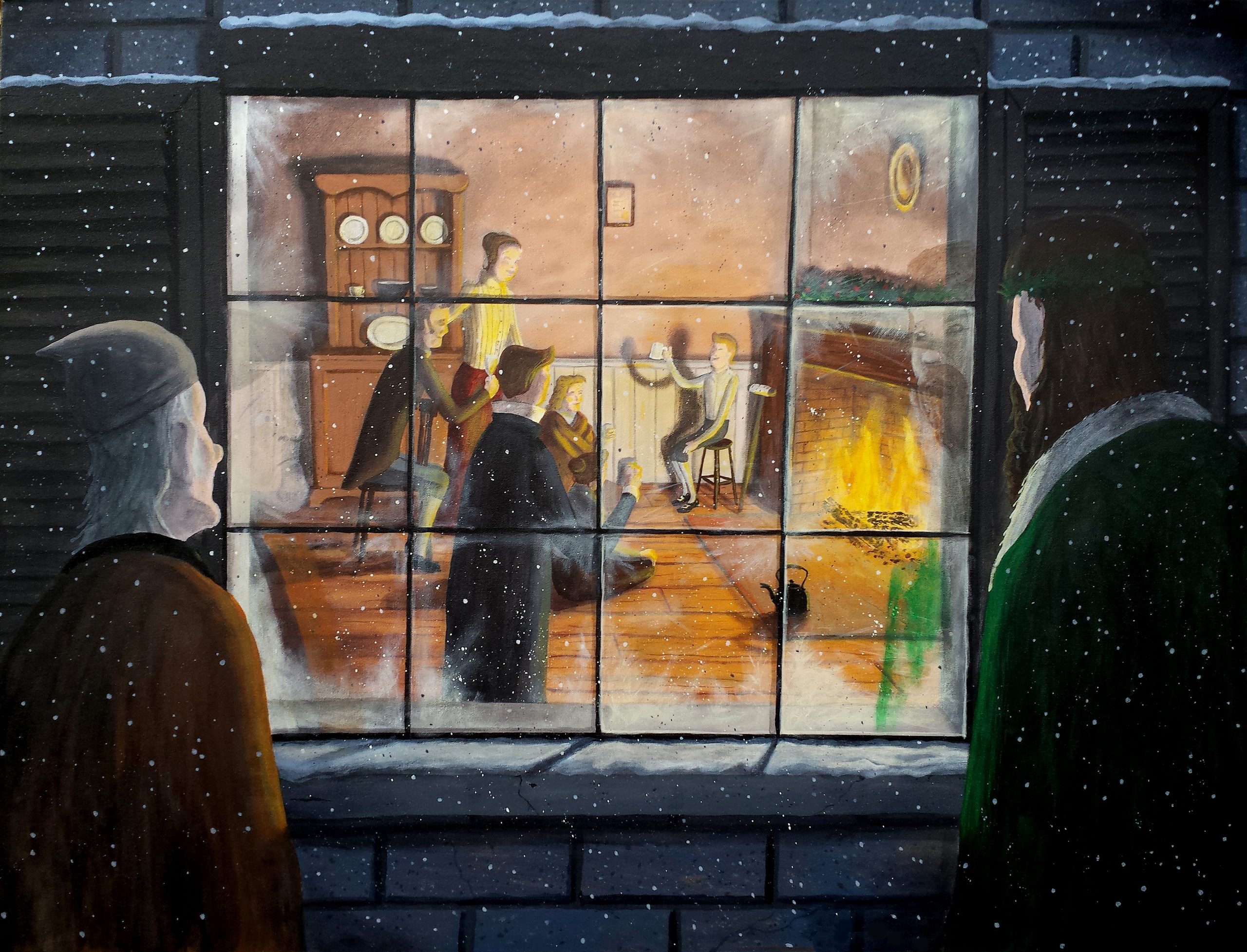 “You recollect the way?” inquired the Spirit.
“You recollect the way?” inquired the Spirit.
“Remember it!” cried Scrooge with fervour; “I could walk it blindfold.”
“Strange to have forgotten it for so many years!” observed the Ghost. “Let us go on.”
They walked along the road, Scrooge recognising every gate, and post, and tree…
So, as our Year 11 students turn into the final straight, once more we find ourselves wondering: will they be able to ‘recollect the way’, like Scrooge in our above passage? Will they be able to recognise ‘every gate, and post, and tree’ of A Christmas Carol – with, or even without, a blindfold?
Revision should start with knowledge and build towards essay skills and exam practice. So, first things first: how can we make the knowledge ‘stick’?
Retrieval quizzes
The humble, low-stakes quiz is a simple but effective way to revise and secure textual knowledge. It often helps to sequence the quiz over a week or so. Begin by setting students a challenge to learn, say, five quotations developing Bob Cratchit’s character, five features of Dickens’s style or four key facts about poverty and education in Victorian England. Then refresh a few days later, perhaps as a simple starter activity, before providing a quiz the following week to see how much the students remember. Ask them to develop and apply the knowledge they have acquired: analyse a quotation, find an example of an aspect of Dickens’s style or find passages that address poverty and education. Then repeat with a different topic related to the novel the following week!
Timelines
Students can revise plot and structure by generating a timeline. You could provide them with a list of key events (going as far back as Scrooge’s experiences at school) and the students put them in order: either chronological or the order they appear in the book. When complete, ask students to reflect on the structure of the novel, such as considering Dickens’s use of the dual timescale or identifying key events which lead to Scrooge’s transformation.
Discussion prompts
You could ask students to talk non-stop for one minute about an assigned theme. Model a response yourself first and provide them with prompt questions: what is the theme’s importance to the novel as a whole? What are the key passages and quotations? How does the theme develop across the novel? As students are listening to each other, they should note anything new or interesting they hear, then share and discuss as a class. Following the activity, students could also reflect and focus on the themes they feel less confident about.
Character stills
It is fair to say we are blessed (and sometimes cursed) with a huge number of film and television adaptations of A Christmas Carol. Find stills of characters from across different adaptations – the ghosts are a great place to start here! Ask students to work out the character and then annotate with descriptions and details from the novel. They could also discuss whether or not the representation is close to how they imagined the character when they read the novel themselves.
Remembering key quotations
Although we should advise students against spending their entire revision schedule learning quotations, some class time could be used to reflect on the most effective ways to remember quotations from the novel. Dickens’s rich and evocative prose style does help here as well! As a class, you could develop (and then display) some mnemonics or images for remembering key quotations. You could present students with a list of quotations and ask them to match each one to a number of exam questions or put them in the order they appear in the text.
Using quotations
The bigger challenge for students, perhaps, is learning what to do with the quotations once they have remembered them. Encourage them to reflect further: where does the quotation appear in the novel? At what point in Scrooge’s transformation? Is it from the perspective of the intrusive third-person narrator or Scrooge? If it is dialogue, who is saying it and to whom? Any distinctive stylistic features? How might the quotation develop character, setting or theme?
Being able to recall, word perfect, hundreds of quotations might be one thing, but essay writing and exam technique also need to be absolutely integral to students’ revision. The proof of the Christmas pudding is, we might say, in the eating. All of these suggested revision activities should be followed up by the teacher modelling essay paragraphs or by students planning responses to exam-style questions. They need to know what the knowledge is for and how they should apply it in an essay. Students should be encouraged to continuously reflect on their progress, identify gaps in knowledge and skills and be provided with clear strategies to fill those gaps and improve.
And, who knows, they may have A Christmas Carol in their heart and manage ‘to keep it all the year.’ Or at least until the summer.
Richard Vardy is an experienced Head of English and a freelance writer. He wrote the introduction and notes to the Collins Classroom Classics edition of A Christmas Carol.
 Explore our Snap Revision series to help your students revise and practise their exam skills – in a snap!
Explore our Snap Revision series to help your students revise and practise their exam skills – in a snap!



